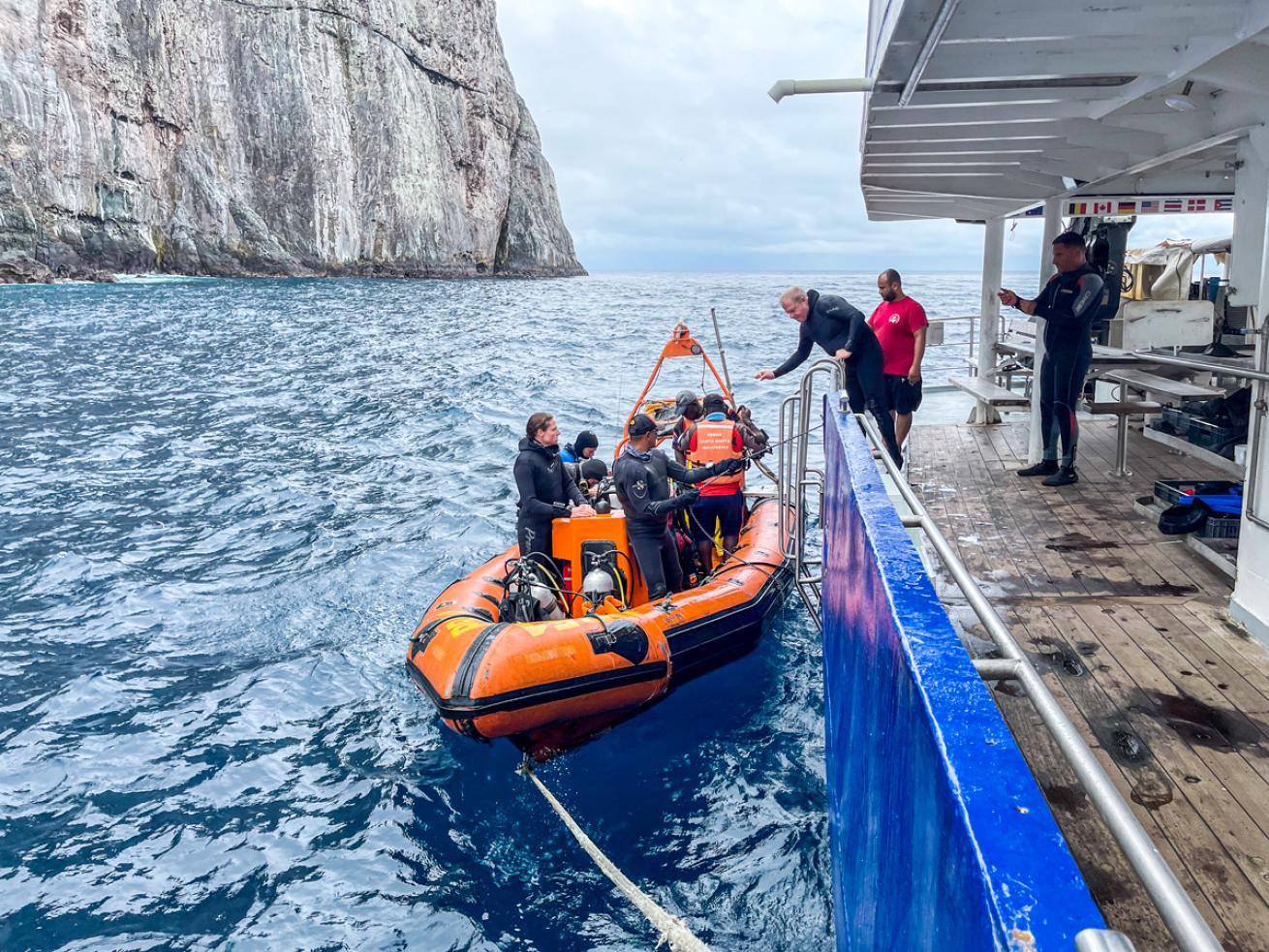Everything You Need to Know About Diving from a Rigid Hull Inflatable Boat

Annie CrawleyLiveaboards often utilize RIBs for diving in remote locations because they are durable, maneuverable and versatile.
Rigid hull inflatable boats (RIBs)—also referred to by the brand name Zodiac— are used for diving around the world. They are tough, durable and perform well everywhere. They are used on many liveaboard adventures, and to access local dive sites. RIBs come in many sizes, with larger boats generally being more comfortable. Regardless of the size or type of RIB, divers are responsible for knowing proper etiquette and safety procedures when diving from them. If you are new to boat diving, let the crew know and consider the PADI Boat Diver specialty course.
Get Organized
Gear bags keep your equipment together on a RIB, where gear may be piled or strewn about. You can streamline your kit in the water with accessories such as clips, retractors and pockets. Label all your gear, including weight pouches, to keep separate parts from getting misplaced. Routines are important and can be relied upon in the cramped conditions of a RIB. Practice getting in and out of your BCD to build muscle memory for the boat. Create checklists for yourself. Consider extra hats or clothing needs for cold conditions or tropical sun. Be prepared, mentally and physically, for your adventure.
Arrive Early
Most boats run on tight schedules. Always arrive early. Set your gear up in advance and conduct a predive safety check. Review the map of the dive site and create a plan. You will either load your gear into tank racks on the boat, or you will put it on before boarding the vessel. Depending on the distance to the dive site and type of inflatable, the vessel will have its own system for storing or wearing personal gear such as masks, fins, hoods, gloves and cameras. Usually, RIBs have a shorter run to a dive site and you will don your exposure suit before boarding the vessel. Know yourself. If you take longer getting into your kit, be first on the scene. Avoid being late as dive planning requires many considerations, from tides and currents to travel time based on wind, swell and potentially other tour operators in the area.
Related Reading: Stunning Photos from the First Antarctic Dive Expedition in Two Years

Annie CrawleyAlways follow the directions of the captain and crew to board safely. Maintain contact with a handle or stationary object to avoid falling over.
Safety Protocols
It’s standard for all small dive boats to carry emergency oxygen, a first-aid kit, a radio, anchor, dive flag and current line. Often when boat diving, you are in remote locations; know the emergency action plan for the area.
Other than the prop, the most dangerous parts of a boat are the ladder and the instability caused by wind, rogue waves and swell. Maintain contact with the boat via handles or ropes when on board. The captain will position passengers with the stability and weight of the vessel in mind. Weight balance is important on small vessels, and the captain may ask you to move forward or back depending on conditions. Use a firm grip with one hand together with your core muscles. In bumpy seas, you will use your grip, quads, core and feet to remain stable. On shorter rides, when wearing your tank, rest it on the tube—the inflatable portion of the boat—for stability. On longer rides, you will gear up at the dive site. Every boat dive will be different. Be aware of surrounding water conditions at all times, and pay attention to incoming swell.
Related Reading: How to Be a Good Dive Buddy — Topside and Underwater
Entering And Exiting
When donning fi ns, sit on the tube and use the trusted figure-four method for stability. Positive back-roll entries are standard; negative entries are necessary for more challenging conditions. Once everyone is ready, and the boat is positioned properly, enter the water when told. If you enter negative with no air in your BCD, remember to equalize your ears and check your mask strap as you enter, then meet your buddy at depth.
Boat diving gives you access to offshore pinnacles and islands, often in regions where currents can take you out to sea very quickly. After finishing your safety stop with your DSMB, surface and assess conditions. If you are with a group, take turns exiting the water. If the boat is farther away, signal that you are OK. Get positively buoyant and protect your airway with a snorkel or reg in your mouth while watching the captain. They may need to pick up other divers before coming to get you. When it’s your turn, hold onto the boat, hand up your camera, weights and BCD, and either swim out with your fi ns on or, if there is a ladder, hand up your fi ns and climb aboard.
Pro Tip
When boat diving, you are often in remote areas with wind, current and changing conditions. A GPS locator device, loud whistle and DSMB are standard safety gear for remote diving. Know how to use all three in case of separation from your group or in an emergency. Before you dive, check your DSMB for signs of wear and ensure it is properly rigged.










